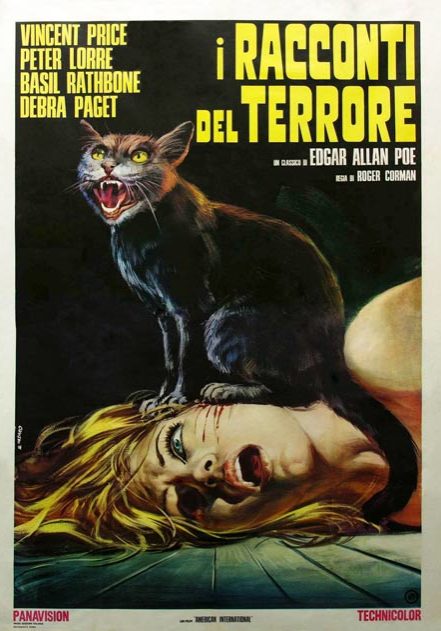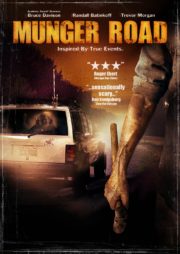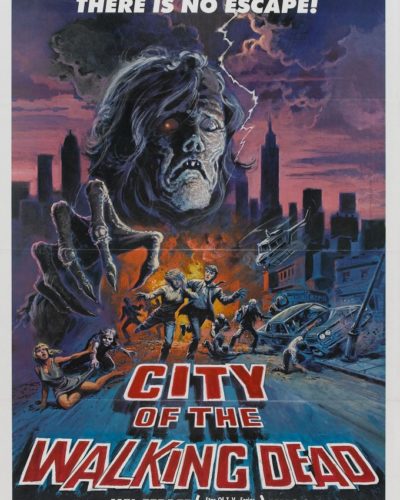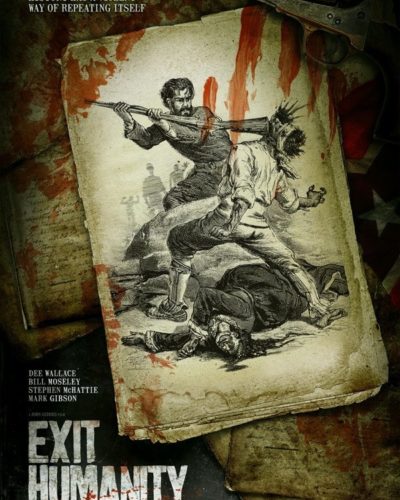A Chilling Ménage à Trois of Terror
“Death is the truest form of love.” Such a chilling proposition sets the tone for Roger Corman’s 1962 triptych of horror, Tales of Terror. This anthology adapts the macabre imaginings of Edgar Allan Poe into a three-course meal of the gruesome and the supernatural, each segment aiming to unsettle the viewer through its own brand of fright. From suspense to sardonic humor, Corman weaves a tapestry of terror that is surprisingly multifaceted for its era. For those embarking on this gothic journey, prepare to be immersed in a world of dread, each story unraveling with morbid curiosity.
Morbidly Picturesque: Atmosphere and Visual Mastery
The genius of Tales of Terror lies in its atmospheric embrace. Each story—be it the wine-inspired madness of “Morella,” the black comedic “The Black Cat,” or the dread-filled “The Case of M. Valdemar”—basks in an eerie glow of calculated terror. The gothic settings are meticulously crafted, from shadow-laden corridors to cobwebbed crypts, creating a consistent sense of unease. Corman, a maestro in the macabre, uses these backdrops to build his tension, layering foreboding with measured pacing, and ensuring that the viewers’ pulse quickens not with excessive gore but with anticipation of the unseen and the inevitable.
Cinematographic choices bolster the horror, with Floyd Crosby’s camerawork providing an eye for gloom. Clever lighting throws characters into relief or swallows them in darkness, while strategic color palettes paint each tale with its distinct hue of horror. Despite the absence of modern special effects, the film’s ability to unsettle remains, relying on practical effects that charm with their ingenuity rather than shock with their realism.
Echoes and Whispers: Soundscapes of Dread
Sound proves a crucial accomplice to the visual elements in conveying horror. Les Baxter’s score is an uncanny entity in itself—sometimes jarring, more often a sinister lullaby that complements the film’s tempo. The use of sound and, at times, its stark absence haunts viewers, making the skin crawl as much as the sight of a reanimated corpse or the telltale beating of a heart beneath the floorboards.
The performances, particularly those of Vincent Price, deliver theatricality without breaching into absurdity. Price’s range across stories showcases his talent for both the sympathetic and the maniacal. Meanwhile, the supporting cast, though sometimes edged out by Price’s dominant screen presence, hold their own, rendering characters with a depth that transcends the genre’s archetypal confines.
Fear by Flavor: The Horror Genre through a Poe-tic Lens
Tales of Terror presents an interesting blend of horror mechanics, spanning the psychological to the supernatural. Corman approaches Poe’s narratives with a respect for the source material while permitting a playful interpretation that gives nods to various horror subgenres without being confined by them. The film leans towards psychological thrills and a taste of body horror but avoids falling into exploitative gore, instead prioritizing story and character to convey fear.
Underneath the horror, themes of guilt, obsession, and the inescapability of death linger, inviting deeper contemplation. The anthology format, with its distinct stories, offers varied takes on these themes, providing a richness beyond mere scares. This multi-faceted approach ensures the film’s longevity, granting it a thought-provoking edge amidst a genre often relegated to thrills.
The film’s effectiveness as a purveyor of horror is unquestionable. It may not cause sleepless nights with unbearable terror but instead seizes the imagination, compelling one to peek once more into the stuff of nightmares. Those with an appreciation for classic horror, Poe’s literature, or cinema history will find much to enjoy here, as will the occasional horror viewer craving less gore and more Gothic charm.
When juxtaposed with contemporaries and successors, like Corman’s other Poe adaptations or the later, more visceral horror pieces, Tales of Terror holds its ground, proving that atmospheric and psychological horror need not buckle before the grotesque to petrify.
The Final Reckoning: A Lingering Fear
Tales of Terror, while undoubtedly a product of its time, captures the enduring essence of horror. It exudes strengths in its rich atmosphere, compelling performances, and adherence to the spirit of Poe’s stories, while its weaknesses are more evident in technological constraints and a pacing unfamiliar to modern audiences. This anthology is recommended for those who savor the subtle nuances in horror and wish to venture into a classic exploration of the macabre. For thrill-seekers in search of relentless scares, this sedate terror may not suffice. However, those capable of appreciating the slow burn of horror classics will find in Corman’s work a satisfying, spine-tingling experience. Viewer discretion is advised due to some thematic elements, but graphic content is minimal, appropriate for a wide audience ready to be haunted by the inimitable shadow of Poe.




